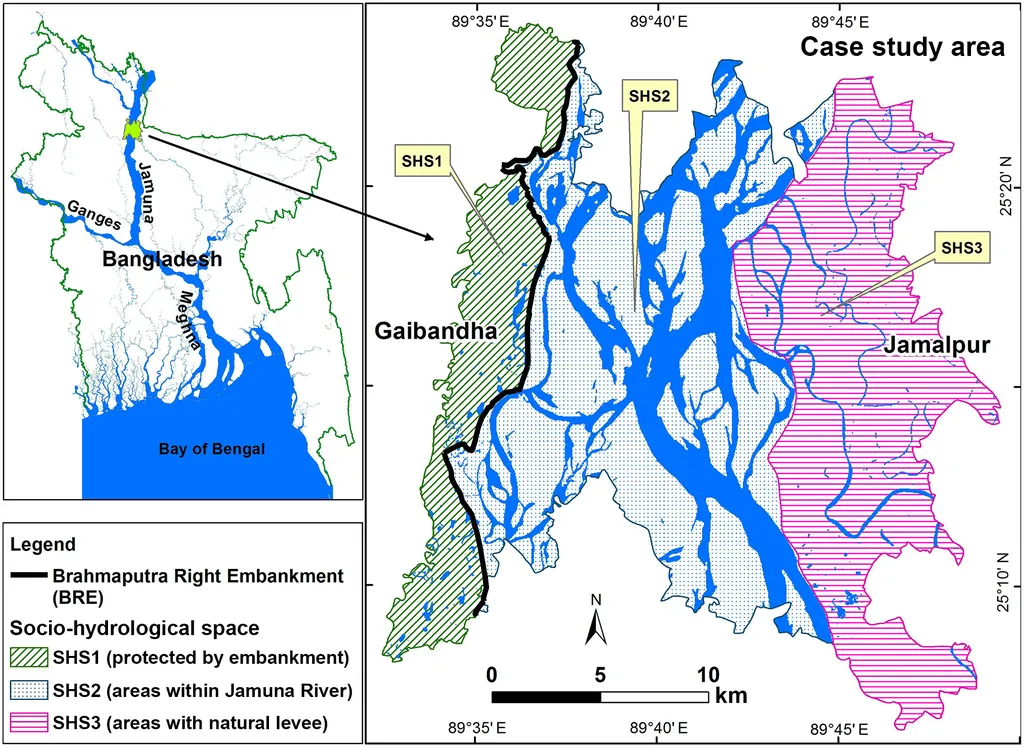In the heart of Bangladesh, where the mighty Meghna River meets the Bay of Bengal, a delicate dance between humans and nature plays out daily. This dance, as revealed in a recent study published in *Frontiers in Water* (which translates to *Frontiers in Water* in English), is one of opportunity and adversity, of livelihoods built and threatened by the ever-changing riverbank. The research, led by Jeff Popke from the Department of Earth, Environment and Planning at East Carolina University, sheds light on the complex interplay between hydrology and society in the Meghna River delta, offering insights that could shape future infrastructure and energy developments in similar regions.
The Meghna River delta is a bustling hub of activity, with intensive human settlement and infrastructure development aimed at managing the environment and mitigating hazards like riverbank erosion. However, as Popke and his team discovered, the reality for local residents is far from straightforward. “The delta environment provides opportunity for local residents, but riverbank erosion has led to significant displacement and is a source of anxiety for many,” Popke explains. This erosion, a natural process exacerbated by human activity, has created a hydrosocial territory—a landscape where the social and the hydrological are inextricably linked.
The study highlights the uneven nature of this territory, characterized by social and spatial inequality. The recent construction of a protective concrete revetment, while a step in the right direction, has not been a panacea. Its limited extent has left some communities more vulnerable than others, creating a patchwork of protection and exposure along the riverbank.
For the energy sector, these findings are particularly relevant. Infrastructure development in delta regions must consider the dynamic nature of the environment and the livelihoods of local residents. As Popke notes, “Riverside dwellers are active agents who manage to craft unique hybrid livelihoods from within the Meghna floodplains.” This resilience and adaptability should be at the heart of future developments, ensuring that infrastructure projects do not disrupt but rather support local livelihoods.
The study also underscores the importance of understanding the local context in infrastructure development. As the energy sector looks to expand into new territories, particularly in developing countries, it must do so with a nuanced understanding of the hydrosocial dynamics at play. This means engaging with local communities, understanding their livelihoods, and ensuring that infrastructure projects are designed with their needs and vulnerabilities in mind.
In the face of climate change and increasing environmental hazards, the lessons from the Meghna River delta are more relevant than ever. As Popke and his team have shown, the future of infrastructure development in delta regions lies in a balanced approach that considers both the hydrological and the social. It is an approach that, if adopted, could not only mitigate the impacts of hazards like riverbank erosion but also support the livelihoods of those who call these dynamic landscapes home.

